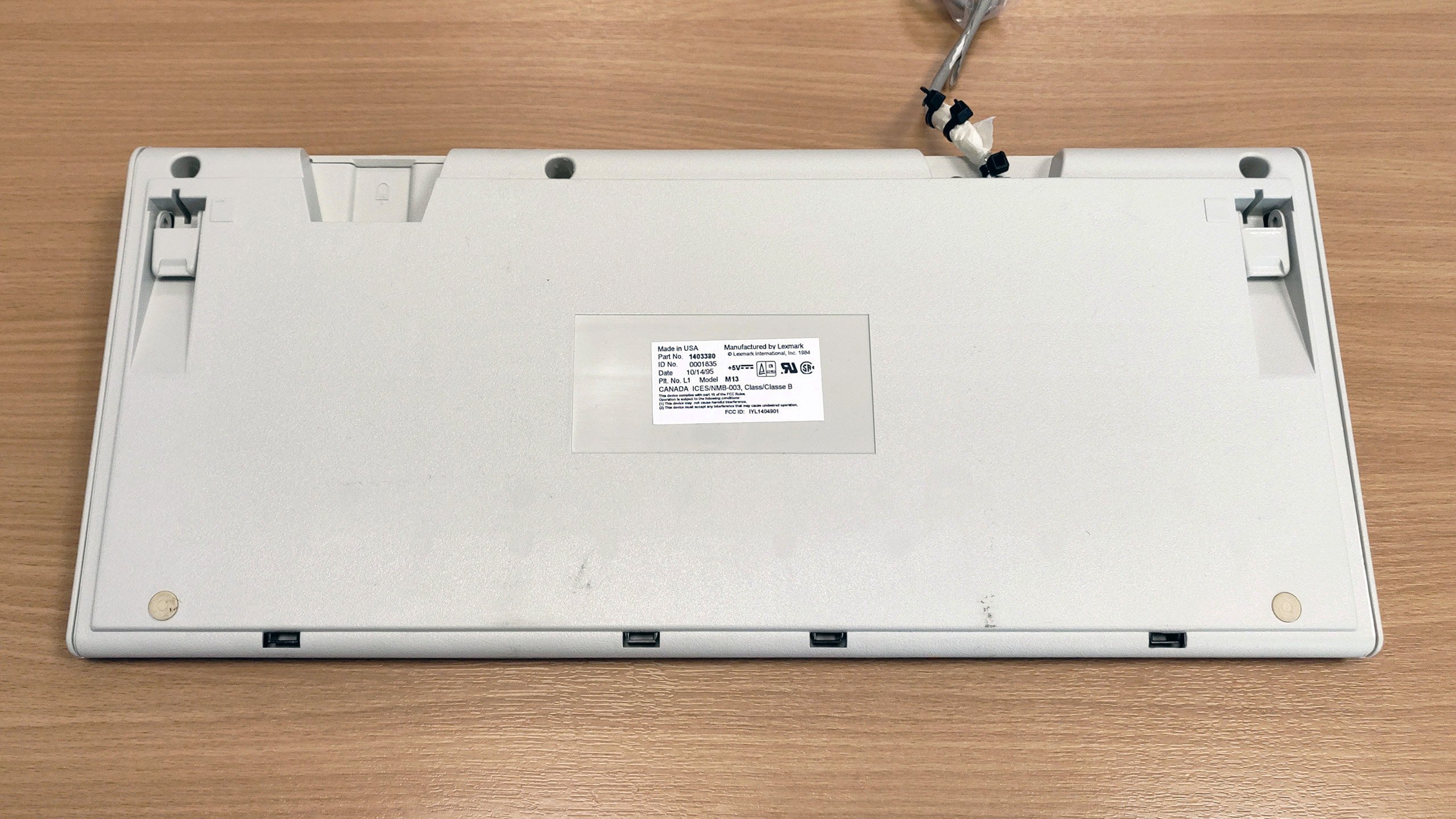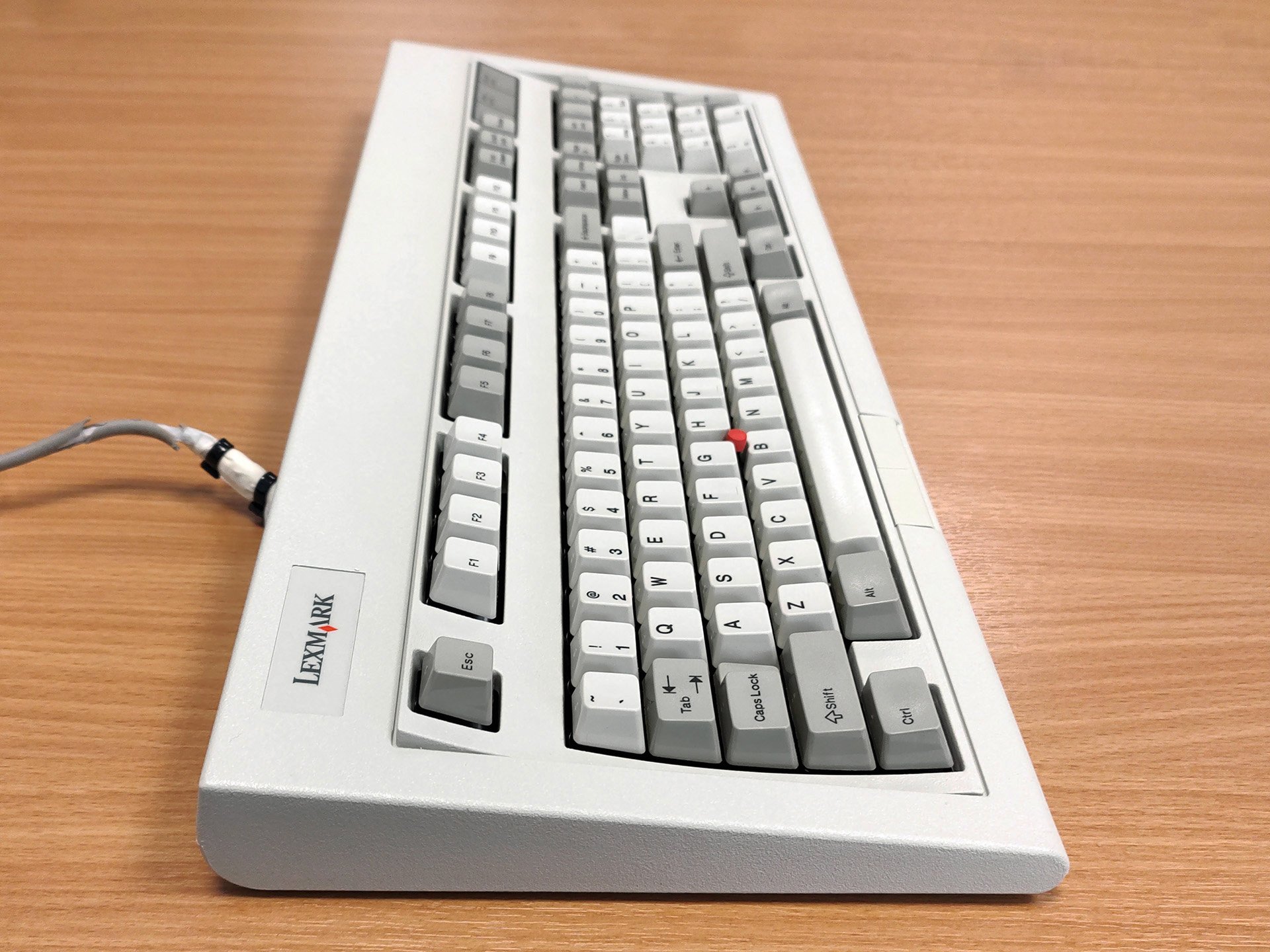This was a new-in-box Lexmark-branded Model M13, a buckling spring keyboard with a nub/nipple/whatever-you-call-it stick! Unlike most IBM-branded versions, Lexmark-branded M13s use a different kind of sensor array for the stick (force-sensing resistors instead of strain gauges) hence why Lexmark doesn't brand this as "TrackPoint". Like Unicomp EnduraPro sticks, it moves like a little joy-stick instead of remaining stationary. Instead of dual PS/2 plugs, this model has an AT full-DIN plug for the keyboard and DE-9 RS232 serial plug for the nub. For more info, see my IBM Model M13 wiki page!
In the box was also a driver disk (an image of which will soon be archived on my website and archive.org) and various Lexmark literature including a snazzy Lexmark Model M family pamphlet, a keyboard operator's guide (user guide) and something that dictates how you're supposed to a sit at a computer desk.
Upon opening, the cable quickly degraded and started shedding everywhere. In lieu of a replacement, I've tapped and wrapped already damaged parts, used cable ties to limit possible flex and left most of the cable alone in the original packing. For now though, the keyboard and cable remains operational.



I also have a New Model M. It uses the same matrix Unicomp has used for years with their Ultra Classic and EnduraPro keyboards. As such, you should be able to observe 2KRO by pressing any 3 WASD keys together (and see my matrix simulator to find more examples).
I don't mean to sound like an arsehole, but it's not a matter of debate; a conductive membrane using a key-matrix is practically limited to 2KRO. You'd either need to stick diodes in (which is harder and not cost-effective to do with membranes versus PCBs) to prevent back current from ghosting keys, or you'd need dedicated traces for each switch position instead of using a matrix (which is costly in traces and the design of controller you'd need for that). Because neither is a practical option, the controller must block keys susceptible to ghosting because not sending all intended keys is preferable to reporting keys not even being pressed. In a key-matrix without diodes, 2 is the maximum number of any given keys guaranteed to be reliably sensed and reported together, thus Model Ms (like most membrane keyboards) are 2KRO. That doesn't mean more keys can be pressed under certain situations - the matrix is like a table of traces, having columns and rows and what combinations are being used matters - but it doesn't change that key rollover means the maximum guarantee across all keys and the number in this case is 2. Not the maximum possible key combination under any condition. I think that part is what confuses a lot of people (which is understandable, I've seen it misrepresented for marketing and used as a buzzword). But, Deskthority Wiki describes as such which is probably generally easier to understand:
I'd be surprised if this is not the case with your keyboard. With the Unicomp Mini M, they improved supported combinations by making the matrix larger (from 16x8 for New M to 16x12) and then using maths you can find out where in the matrix the most commonly used keys should go, but you can still observe 2KRO on a Mini M by trying to press any 3 arrow keys down.